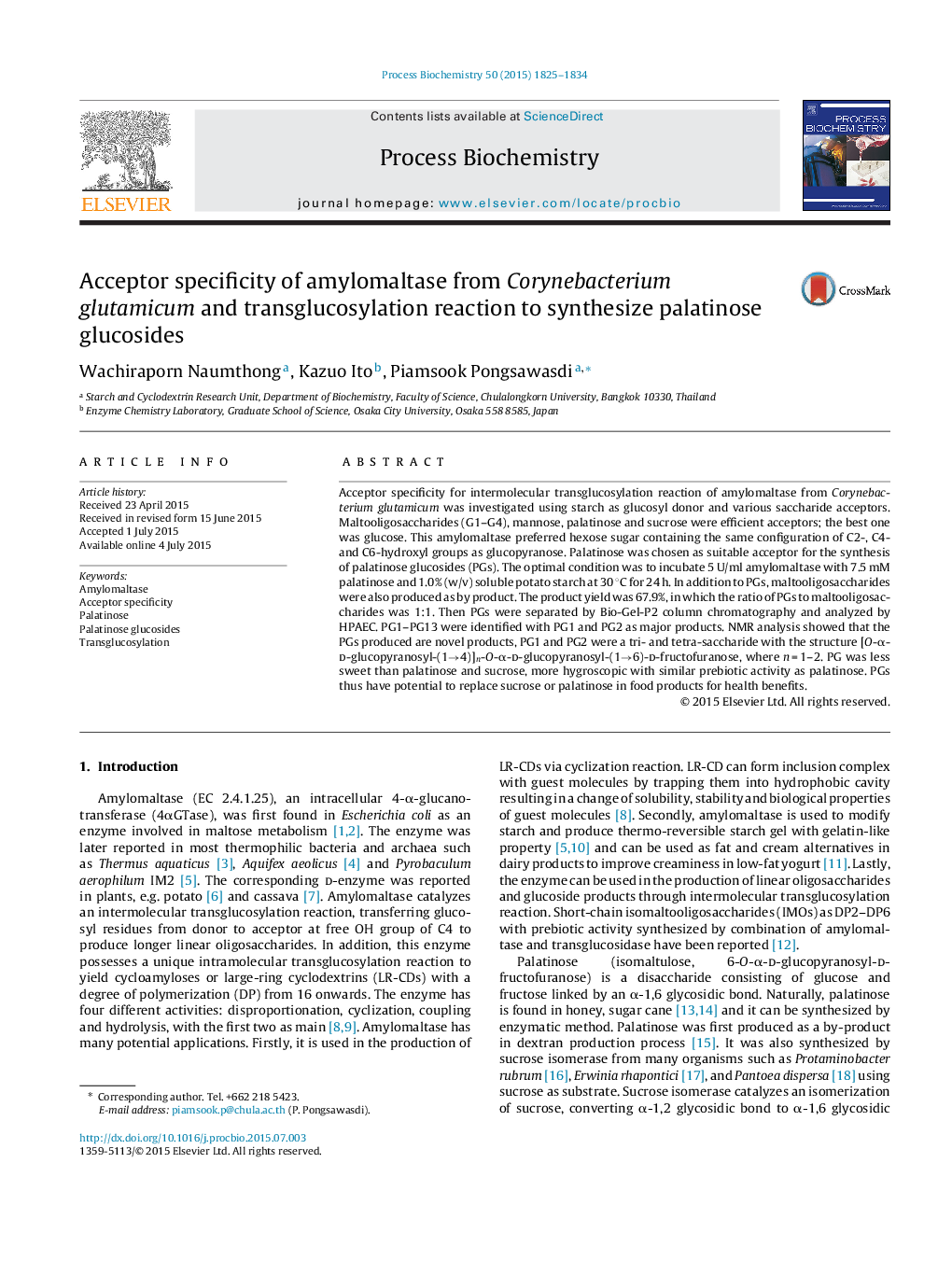| کد مقاله | کد نشریه | سال انتشار | مقاله انگلیسی | نسخه تمام متن |
|---|---|---|---|---|
| 34282 | 45016 | 2015 | 10 صفحه PDF | دانلود رایگان |
• Acceptor specificity for amylomaltase from Corynebacterium glutamicum (CgAM) was determined.
• CgAM showed high specificity for hexoaldose, especially glucose with up to 5 units.
• Palatinose was used as acceptor for CgAM in palatinose glucosides (PGs) synthesis.
• A series of novel PGs, PG1–PG13, was obtained with PG1 and PG2 as main products.
• PGs have potential applications in food products for health benefits.
Acceptor specificity for intermolecular transglucosylation reaction of amylomaltase from Corynebacterium glutamicum was investigated using starch as glucosyl donor and various saccharide acceptors. Maltooligosaccharides (G1–G4), mannose, palatinose and sucrose were efficient acceptors; the best one was glucose. This amylomaltase preferred hexose sugar containing the same configuration of C2-, C4- and C6-hydroxyl groups as glucopyranose. Palatinose was chosen as suitable acceptor for the synthesis of palatinose glucosides (PGs). The optimal condition was to incubate 5 U/ml amylomaltase with 7.5 mM palatinose and 1.0% (w/v) soluble potato starch at 30 °C for 24 h. In addition to PGs, maltooligosaccharides were also produced as by product. The product yield was 67.9%, in which the ratio of PGs to maltooligosaccharides was 1:1. Then PGs were separated by Bio-Gel-P2 column chromatography and analyzed by HPAEC. PG1–PG13 were identified with PG1 and PG2 as major products. NMR analysis showed that the PGs produced are novel products, PG1 and PG2 were a tri- and tetra-saccharide with the structure [O-α-d-glucopyranosyl-(1→4)]n-O-α-d-glucopyranosyl-(1→6)-d-fructofuranose, where n = 1–2. PG was less sweet than palatinose and sucrose, more hygroscopic with similar prebiotic activity as palatinose. PGs thus have potential to replace sucrose or palatinose in food products for health benefits.
Figure optionsDownload as PowerPoint slide
Journal: Process Biochemistry - Volume 50, Issue 11, November 2015, Pages 1825–1834
